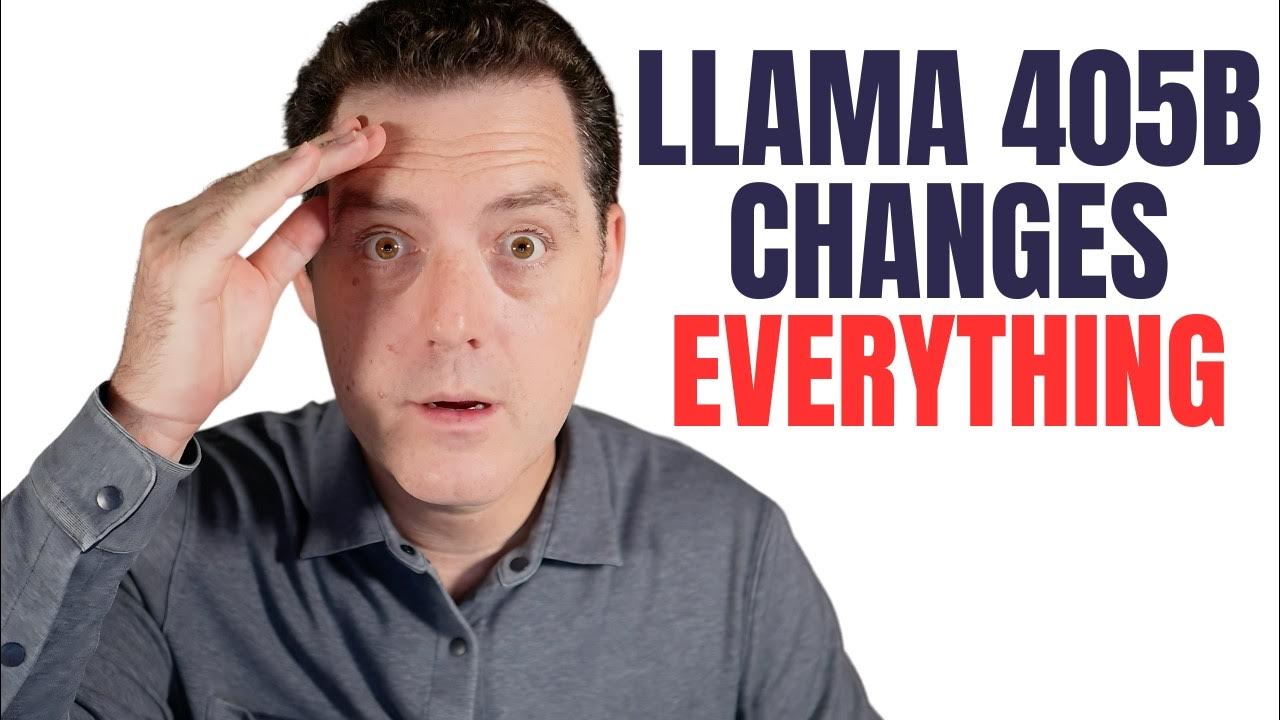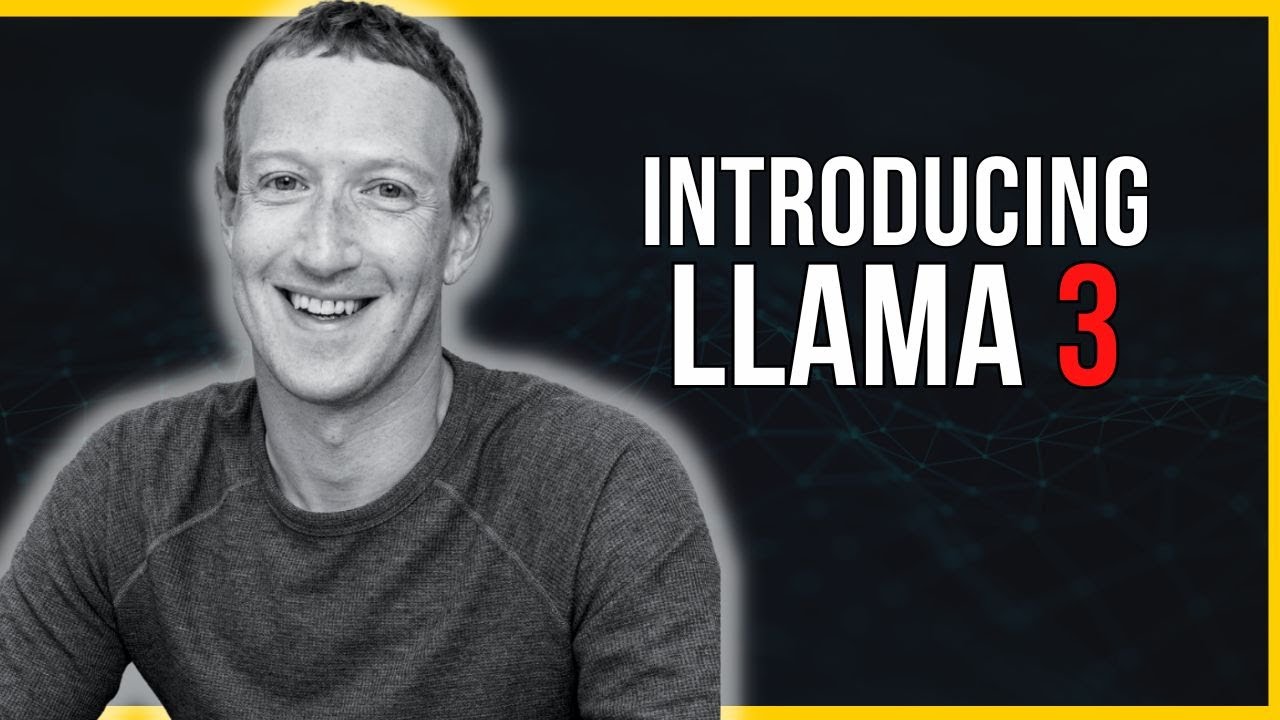Zuckerberg cooked a beast LLM - LLama 3.1 405B!!!!
Summary
TLDRMark Zuckerberg's Meta AI has released the largest open-source language model, Llama 3.1, with 45 billion parameters. The model, available on platforms like Hugging Face and for US users on WhatsApp and Meta's own app, is trained on 15 trillion tokens using 16,000 H100 GPUs. It offers capabilities in reasoning, tool use, and multilinguality, with a 128,000 context window. The model is licensed for synthetic data generation, fine-tuning, and distillation, aiming to foster an ecosystem of AI agents and applications.
Takeaways
- 🚀 Mark Zuckerberg has delivered on his promise to release a 45 billion parameter AI model, which is a significant achievement in the field of AI.
- 📈 The model, known as LLaMA 3.1, is available for download on Hugging Face's model hub, subject to approval, and comes with a flexible license.
- 🔢 LLaMA 3.1 comes in three versions: 8 billion, 70 billion, and 405 billion parameters, with the largest being accessible in the US on WhatsApp and Meta's platform.
- 💻 The model has been trained on an enormous 15 trillion tokens, requiring substantial infrastructure and computational resources.
- 🔧 The model's architecture is a standard decoder-only Transformer model with some adaptations, but it is not a mixture of experts model.
- 🏆 LLaMA 3.1 has shown impressive performance on various benchmarks, sometimes outperforming proprietary models like Claude 3.5 and GPT-4.
- 🔄 The model supports an iterative post-training procedure, including supervised fine-tuning (SFT) and reinforcement learning from human feedback (DPO).
- 🌐 Meta AI emphasizes the model's capabilities in tool usage, synthetic data generation, and multilingual support, highlighting its versatility.
- 🔑 The license has been updated to allow for the use of the model's outputs to improve other models, including synthetic data generation and distillation.
- 🤖 Meta AI has created a 'Llama tool chain' to encourage the development of an ecosystem around the model, including standardized interfaces for various components.
- 📚 The release is accompanied by a research paper detailing the model's capabilities and performance, inviting the community to explore and contribute to its development.
Q & A
Who delivered the 45 billion parameter model and what was the initial promise?
-Mark Zuckerberg delivered the 45 billion parameter model, fulfilling a promise he made a few months prior to deliver such a large-scale model.
What is the name of the model and where can it be accessed?
-The model is called 'Llama 3.1' and can be accessed on the Hugging Face Model Hub if the request gets approved, or it can be used on WhatsApp and Meta for users in the US.
What are the different versions of the Llama 3.1 model?
-The Llama 3.1 model comes in three different versions: 8 billion, 70 billion, and 405 billion parameters.
How many tokens was the model trained on and what does this entail?
-The model was trained on 15 trillion tokens, which involves collecting such a vast number of tokens and having the necessary infrastructure to train on them.
What type of GPUs were used to train the model and how many?
-The model was trained over 16,000 H100 GPUs, indicating a substantial computational resource investment.
What is the architecture of the Llama 3.1 model?
-The architecture of Llama 3.1 is a standard decoder-only Transformer model with minimal adaptations, and it is not a mixture of experts model.
What is the significance of the model having a 128,000 context window?
-The 128,000 context window allows the model to work with larger code bases or more detailed reference materials, enhancing its capabilities in handling complex tasks.
How does the model perform on benchmarks compared to other models?
-The model shows impressive performance, scoring higher on certain benchmarks like human evaluation and coding-related problems compared to other models like Claude 3.5 and GPD-4.
What is the license flexibility offered for the Llama 3.1 model?
-The model is offered with a flexible license that allows for various uses, including synthetic data generation, fine-tuning, and even improving other models.
What are some of the use cases highlighted by Meta for the Llama 3.1 model?
-Meta has highlighted use cases such as real-time and batch inference, fine-tuning, continued pre-training, specific text application, function calling, tool usage, and synthetic data generation.
What is the 'Llama tool chain' and what is its purpose?
-The 'Llama tool chain' is a standardized, opinionated interface for building a canonical tool chain for components like fine-tuning, synthetic data generation, and agent applications, aiming to create an ecosystem of Llama systems.
Outlines

This section is available to paid users only. Please upgrade to access this part.
Upgrade NowMindmap

This section is available to paid users only. Please upgrade to access this part.
Upgrade NowKeywords

This section is available to paid users only. Please upgrade to access this part.
Upgrade NowHighlights

This section is available to paid users only. Please upgrade to access this part.
Upgrade NowTranscripts

This section is available to paid users only. Please upgrade to access this part.
Upgrade NowBrowse More Related Video

Zuckerberg's "Scorched Earth" LLaMA AI Strategy (Interview Breakdown)

Metas LLAMA 405B Just STUNNED OpenAI! (Open Source GPT-4o)

BREAKING: LLaMA 405b is here! Open-source is now FRONTIER!

AI News: The AI Arms Race is Getting Insane!

LLAMA 3 Released - All You Need to Know

Mistral 7B: Smarter Than ChatGPT & Meta AI - AI Paper Explained
5.0 / 5 (0 votes)